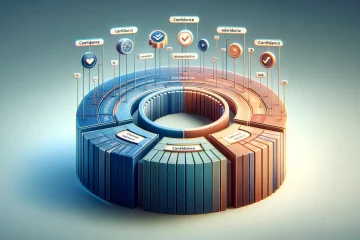Understanding AI in Bilingual Mindfulness Practices
How AI Adds a Human Touch to Bilingual Mindfulness
Imagine sitting cross-legged, eyes gently closed, as you absorb the stillness of the moment. Around you, spoken words in two languages weave together like threads in a tapestry, grounding you. Now, picture those words—your mindful anchors—being crafted with precision by AI-driven tools. Sounds futuristic? It is, and it’s already transforming how bilingual mindfulness programs connect deeply with participants.
What makes this process fascinating is how artificial intelligence goes beyond literal translation. It catches the subtle nuances, the poetry of language. For instance, a quote about “letting go” in English may translate to Spanish as “soltar,” which evokes not just release but surrender, freedom. See the difference? Without these emotional layers, the practice risks feeling hollow to your heart.
- AI tools analyze cultural intricacies, avoiding word-for-word translations.
- They mirror tone, ensuring that calm vibes remain intact across languages.
- They adapt quotes to match the philosophy behind mindfulness, no matter the tongue.
The result? A richer, more personal connection for bilingual audiences, where every word feels like it truly belongs.
The Role of Quote Translations in Mindfulness Programs

Why Translated Quotes Resonate Deep in Mindfulness
Imagine this: you’re sitting in a cozy mindfulness circle, the room softly humming with tranquility. The instructor shares a quote—something timeless and profound—but it’s in a language you don’t fully understand. Suddenly, that universal truth feels just out of reach, like trying to grasp sunlight slipping through your fingers. This is where translated quotes become a lifeline, pulling wisdom closer to your heart.
In bilingual mindfulness programs, a thoughtfully translated quote does more than bridge a language gap—it becomes a doorway. It allows participants to connect with teachings on a deeply personal level. For instance, a Japanese Zen maxim like “Shoshin” (beginner’s mind) holds a different weight when expressed clearly in someone’s native tongue. It moves from being abstract to something vividly alive, something you can carry into your daily practice.
A great translation doesn’t simply replace words; it captures the soul of ideas. It reflects empathy, ensuring that every participant—regardless of cultural background—feels seen and included. Because mindfulness, after all, isn’t just about silence and breath; it’s about embracing our shared humanity.
- Translated quotes can inspire reflection, even sparking emotional breakthroughs.
- They foster inclusivity, making everyone feel anchored in the moment.
Benefits of AI-Driven Translations for Bilingual Programs

The Game-Changer: AI in Bilingual Learning
Imagine this: you’re in a bilingual mindfulness session, meditating on a profound quote. You hear it first in one language, then another. The transition feels seamless—natural even. That’s the magic of AI-driven translations. These aren’t your run-of-the-mill, robotic word swaps; they capture nuance, context, and cultural essence with astonishing precision.
For bilingual programs, this isn’t just technology—it’s a revolution. Why? Because every word matters, especially when guiding someone’s inner journey. AI ensures that phrases like “peace of mind” carry the same emotional weight in Spanish as they do in English. That’s no small feat.
- Speed: Forget waiting days for human translators—AI delivers flawless translations in moments.
- Consistency: Whether it’s the word “serenity” or “awareness,” meanings stay true across languages.
- Accessibility: Reach a broader audience without sacrificing linguistic depth or cultural empathy.
These tools don’t just translate—they elevate. They enable bilingual mindfulness programs to connect deeply, authentically, and effortlessly with diverse communities. And isn’t connection what mindfulness is all about?
Challenges in Implementing AI for Mindfulness Quotes

When Technology Meets Human Emotion
The journey of implementing AI for mindfulness quotes isn’t without its bumps. Imagine trying to teach a machine the subtle art of a calming Zen proverb—it’s like showing a robot how to feel the warmth of sunlight. At its core, mindfulness thrives on emotional resonance. It’s not just about translating words; it’s about capturing nuance, intent, and cultural depth. Now, picture AI stepping in to help: brilliant at logic, but inexperienced in empathy. That’s where the challenges really begin to bloom.
For instance, take a quote like, “Be here now.” While simple in English, its essence might get clouded in translation if AI overlooks cultural sensibilities. And mindfulness demands authenticity—no one wants a digital misstep in their spiritual practice! On top of that:
- Some languages have layered meanings AI struggles to decode.
- Formatting styles for written quotes can vary globally, leading to confusion.
Fine-tuning these systems feels a bit like sculpting marble—it takes patience, artistry, and constant tweaking. It’s not just coding; it’s crafting a bridge between tech precision and human vulnerability.
Future Trends in AI and Bilingual Mindfulness Programs

The Next Chapter: AI’s Role in Evolving Mindfulness Practices
Imagine a world where your favorite mindfulness quotes are not only beautifully translated but also resonate deeply with your cultural nuances. This is the future we’re stepping into. Modern AI technologies are shedding their robotic shells and embracing a more human touch, learning to capture tone, context, and even emotion better than ever before.
What’s more, these systems are becoming increasingly intuitive. Think of an AI assistant that remembers your preferred languages, recognizes your daily struggles, and gently offers you bilingual affirmations tailored to your mood. It’s like your own personal meditation coach—but smarter, quicker, and always available.
The future isn’t just about translations; it’s about creating experiences. We’ll see:
- Sentiment-aware algorithms that detect emotional states and adapt quotes accordingly.
- Interactive voice features offering guided meditations in two synchronized languages.
- Even AR/VR tools immersing you in serene multilingual environments.
Going Beyond Words: Cultural Sensitivity Meets Precision
This evolution won’t stop at language. Picture AI understanding the subtle layers of cultural traditions, addressing not just what’s being said but how it’s felt. For instance, a gratitude quote rooted in Zen Buddhism might be transformed using AI—not just translated linguistically but delivered with imagery or contexts that amplify its original essence for diverse audiences.
Bilingual mindfulness is on the brink of something breathtaking. And the secret to this? A synergy between innovative machine learning breakthroughs and humanity’s timeless need for inner peace.


